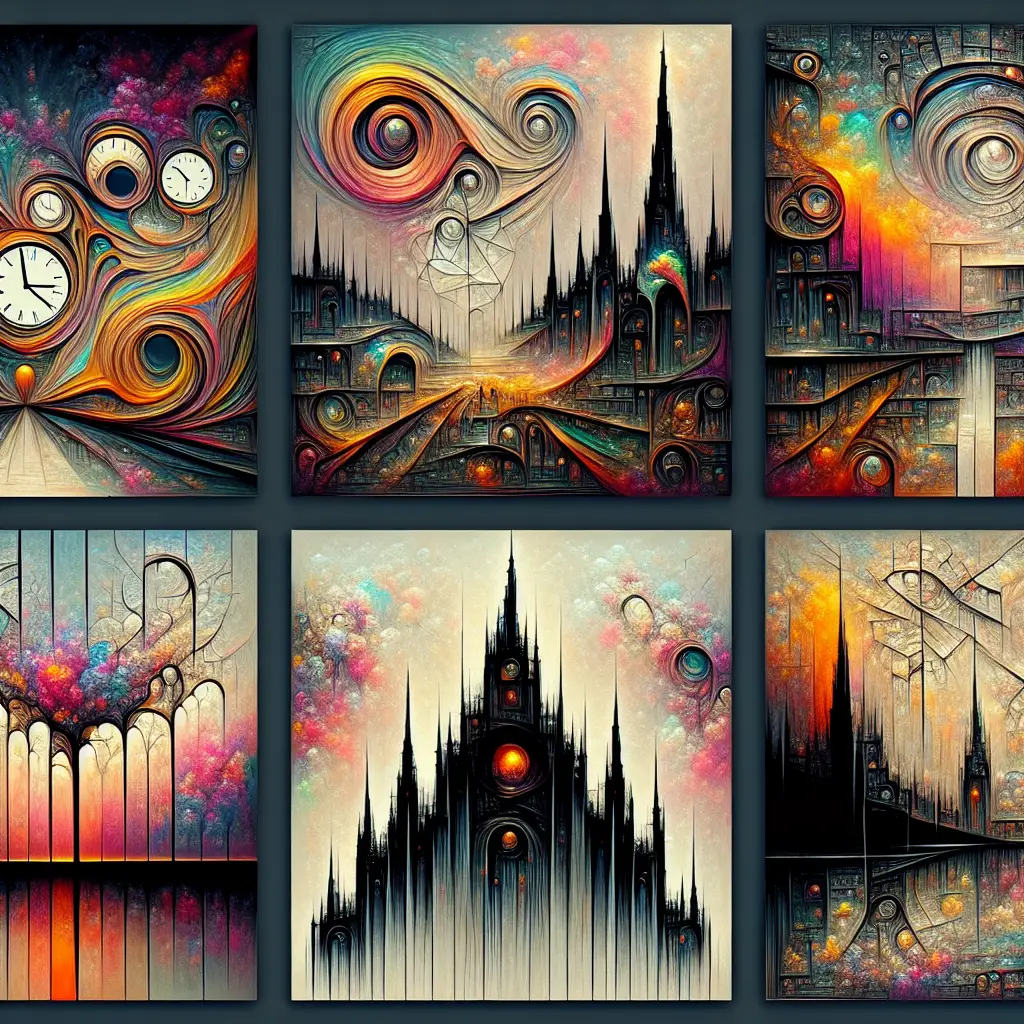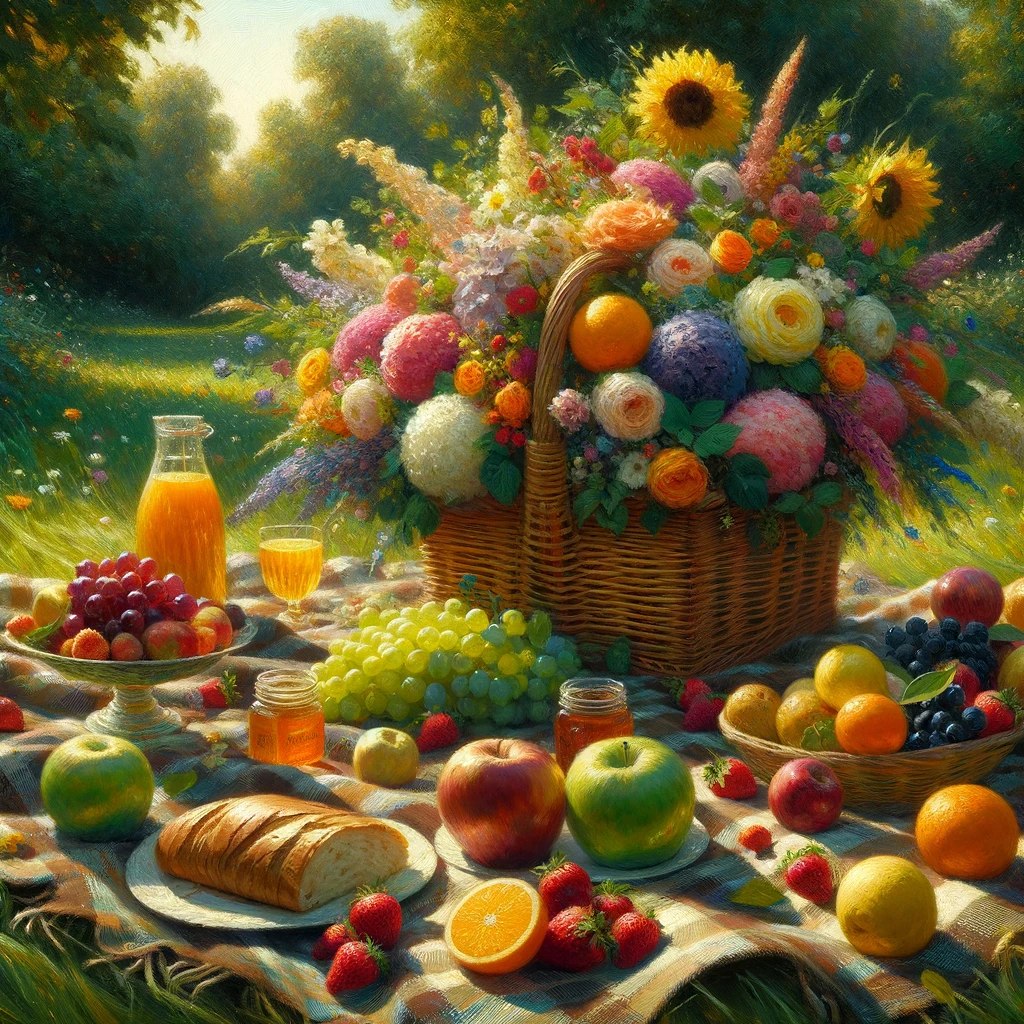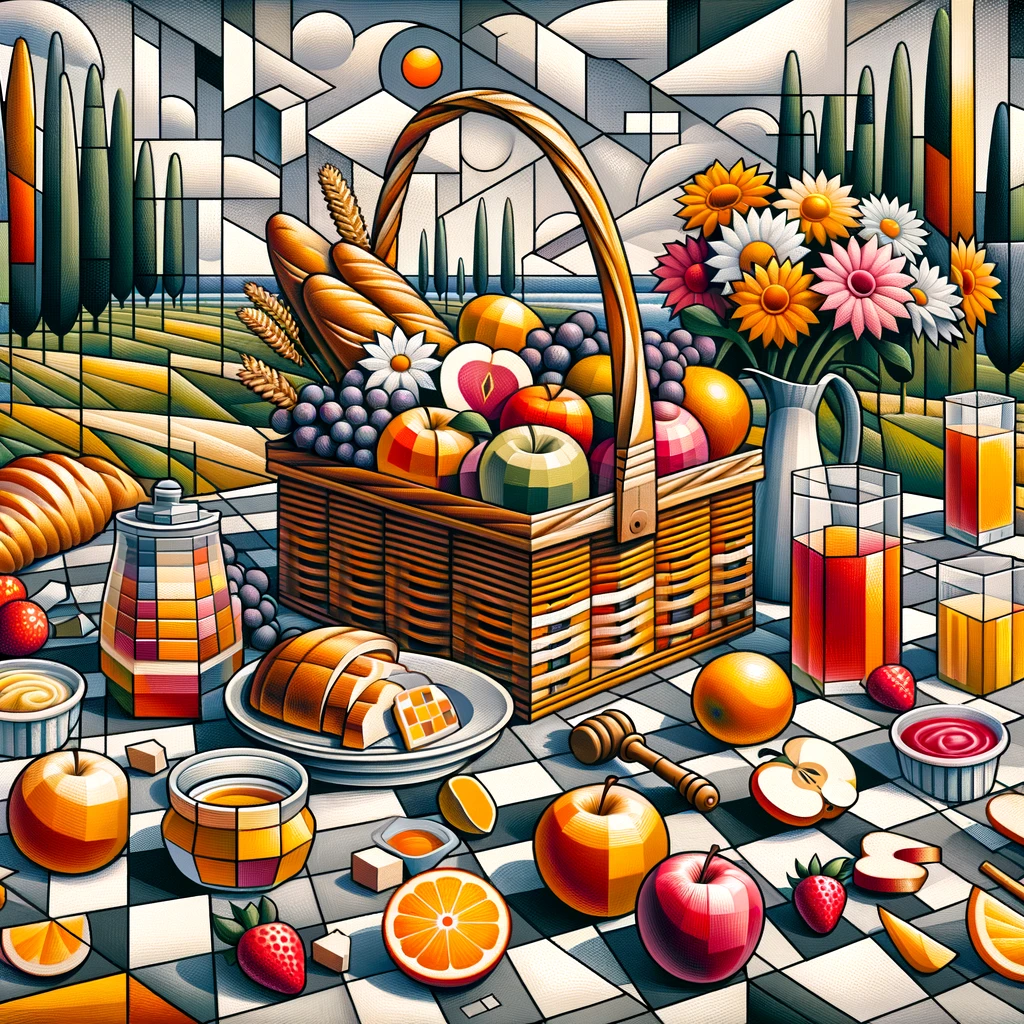Artificial Intelligence (AI) has revolutionized various sectors, including the art industry. AI tools have been developed to create different types of art, showcasing the intersection of technology and creativity. The five types of art created by Artificial Intelligence tools include Generative Art, Neural Art, Style Transfer Art, 3D Art, and AI-generated music. Generative Art involves creating unique pieces from algorithms, while Neural Art uses neural networks to mimic the style of famous artists. Style Transfer Art involves applying the style of one image to another, creating a fusion of two distinct artworks. 3D Art uses AI to create three-dimensional models and environments, and AI-generated music involves using AI algorithms to compose music. These AI tools prompt artists to explore new creative avenues, pushing the boundaries of traditional art forms.
Exploring the 5 Types of Art Generated by Artificial Intelligence Tools
Artificial Intelligence (AI) has been making waves in various sectors, and the art world is no exception. The advent of AI tools has revolutionized the way art is created, leading to the emergence of five distinct types of AI-generated art. These include generative art, style transfer art, interactive art, AI-assisted art, and AI-curated art.
AI Tools For Generative Art
Generative art, the first type, is created by algorithms that generate unique pieces of art. These algorithms are designed to mimic the creative process, using randomness and complex rules to produce art that is always original. The AI tool DeepArt, for instance, uses generative algorithms to create digital paintings from user-uploaded images. The result is a one-of-a-kind piece of art that is both aesthetically pleasing and technically impressive.
AI Tools For style transfer art
The second type, style transfer art, involves the use of AI to apply the style of one image to another. This is achieved through convolutional neural networks, which are trained to understand and replicate artistic styles. The AI tool DeepStyle, for example, allows users to transform their photos into the style of famous paintings. This type of AI-generated art offers a unique blend of traditional artistry and modern technology.
AI Tools For Interactive art
Interactive art, the third type, is a form of art that involves audience participation. AI tools like Google’s DeepDream allow users to interact with the art creation process, generating surreal images that reflect their input. This type of AI-generated art blurs the line between artist and audience, creating a dynamic and engaging art experience.
AI Tools For AI-assisted art
The fourth type, AI-assisted art, involves the use of AI to aid in the creation of traditional art. AI tools like Daz 3D offer artists a range of features, from pose estimation to lighting simulation, that can enhance their creative process. This type of AI-generated art represents a fusion of traditional artistry and cutting-edge technology.
AI Tools For AI-curated art
Finally, AI-curated art involves the use of AI to curate art exhibitions. AI tools like Artrendex’s ArtPI use machine learning algorithms to analyze art and make curatorial decisions. This type of AI-generated art offers a new perspective on art curation, challenging traditional notions of artistic value and taste.
Each of these types of AI-generated art comes with its own set of prompts or challenges. For generative art, the challenge lies in designing algorithms that can produce aesthetically pleasing and original art. For style transfer art, the challenge is to train neural networks to understand and replicate artistic styles accurately. For interactive art, the challenge is to create engaging and dynamic art experiences. For AI-assisted art, the challenge is to develop AI tools that can enhance the creative process without overshadowing the artist’s role. And for AI-curated art, the challenge is to design machine learning algorithms that can make informed and insightful curatorial decisions.
AI tools are reshaping the art world, giving rise to new types of art that challenge traditional notions of creativity and authorship. Whether it’s through generative algorithms, style transfer, interactive experiences, AI assistance, or AI curation, these tools are pushing the boundaries of what is possible in art. As we continue to explore the potential of AI in art, we can expect to see even more innovative and exciting developments in this field.
Understanding the Prompts in Creating Art through Artificial Intelligence

text-based prompt
The first type of prompt is the text-based prompt. This involves inputting a string of text into the AI tool, which then interprets the text and generates an image based on its interpretation. For instance, if you input the text “a futuristic cityscape at sunset,” the AI tool will generate an image that it believes best represents this description. The beauty of text-based prompts lies in their simplicity and the vast range of possibilities they offer.

image-based prompt
The second type of prompt is the image-based prompt. In this case, an existing image is fed into the AI tool, which then modifies the image based on its algorithms. This could involve changing the style of the image to mimic a particular artist or altering the content of the image to create a new scene. Image-based prompts are particularly useful for artists who want to experiment with different styles or create surrealistic art.

music-based prompt
The third type of prompt is the music-based prompt. Here, the AI tool generates visual art based on a piece of music. The tool analyzes the music’s rhythm, melody, and other elements, and translates these into visual forms. This type of prompt is perfect for creating album covers or music videos, as it ensures that the visual art is in harmony with the music.
data-based prompt
The fourth type of prompt is the data-based prompt. This involves inputting a set of data into the AI tool, which then creates a visual representation of the data. This could be a graph, a map, or any other type of visual data representation. Data-based prompts are particularly useful in fields like data science and economics, where visualizing data can make it easier to understand and interpret.
The fifth and final type of prompt is the interactive prompt. This involves the AI tool generating art based on user interaction. The user can manipulate certain elements of the art, and the AI tool will adjust the rest of the image accordingly. This type of prompt is great for creating interactive art installations or video games.
interactive prompt
Understanding the different types of prompts used by AI tools in art creation is key to leveraging these tools effectively. Whether you’re a traditional artist looking to experiment with new styles, a musician seeking unique album art, or a data scientist needing to visualize complex data, there’s an AI art tool with the right prompt for you. As AI continues to evolve, we expect to see even more innovative and exciting ways to create art using these tools.
The Intersection of Creativity and Technology: 5 AI-Generated Art Types
Artificial Intelligence (AI) has been making waves in various sectors, and the art world is no exception. The intersection of creativity and technology has given birth to AI-generated art, a fascinating blend of human creativity and machine learning. This article will explore five types of art created by AI tools and provide prompts to inspire your own AI-generated art projects.
AI-generated paintings
Firstly, we have AI-generated paintings. These are created using algorithms that analyze thousands of existing artworks to understand artistic styles and techniques. The AI then uses this knowledge to create new, unique paintings. A prompt for creating AI-generated paintings could be to input a specific art style, such as Impressionism or Cubism, and let the AI create a painting in that style.

digital art
Secondly, AI can generate digital art. This includes everything from graphic design to digital illustrations. AI tools can analyze trends in digital art and create pieces that are in line with these trends. A prompt for creating AI-generated digital art could be to input a specific color palette or theme, such as nature or urban landscapes, and let the AI create a piece based on these inputs.

generative art
Thirdly, AI can create generative art. This type of art is created using algorithms that generate new images or sounds. The AI uses randomness and complex algorithms to create art that is always unique and never repeats. A prompt for creating AI-generated generative art could be to input a specific shape or sound and let the AI create a piece based on this input.

fractal art
Fourthly, AI can generate fractal art. This type of art is created using mathematical formulas to generate complex, infinitely detailed patterns. The AI uses these formulas to create intricate, mesmerizing pieces of art. A prompt for creating AI-generated fractal art could be to input a specific mathematical formula or pattern and let the AI create a piece based on this input.

3D art
Lastly, AI can create 3D art. This includes everything from 3D models to virtual reality environments. AI tools can analyze 3D shapes and structures to create realistic, detailed 3D art. A prompt for creating AI-generated 3D art could be to input a specific object or environment, such as a building or a forest, and let the AI create a 3D model based on this input.
In conclusion, the intersection of creativity and technology has opened up a whole new world of possibilities for art. AI-generated art is a fascinating blend of human creativity and machine learning, resulting in unique, captivating pieces of art. Whether it’s paintings, digital art, generative art, fractal art, or 3D art, AI tools are pushing the boundaries of what’s possible in the art world. So why not give it a try? With the right prompts and a bit of imagination, you can create your own AI-generated art.
Decoding the Prompts: How AI Tools are Revolutionizing Art Creation
Artificial Intelligence (AI) has been making waves in various sectors, and the art world is no exception. The advent of AI tools has revolutionized the way art is created, offering a plethora of previously unimaginable possibilities. These tools, powered by complex algorithms and machine learning, can generate art in various forms, each with its unique prompts.
generative art
The first type of art created by AI tools is generative art. This art form is created using algorithms that generate patterns or shapes based on specific prompts. The AI tool uses these prompts to create a unique piece of art, with the final result often being unpredictable and surprising. For instance, a prompt could be a specific color scheme or a particular shape, and the AI tool would generate a piece of art based on these parameters.
style transfer art
The second type is style transfer art. This involves the AI tool taking the style of one image and applying it to another. The prompt in this case would be the two images – the source image whose style is to be copied, and the target image to which the style is to be applied. The AI tool uses deep learning algorithms to understand the style of the source image and then applies it to the target image, creating a unique piece of art that combines the elements of both images.
text-to-image art
The third type is text-to-image art. Here, the AI tool generates an image based on a text prompt. The prompt could be a simple description or a complex narrative, and the AI tool would generate an image that visually represents the text. This type of art is particularly fascinating as it showcases the AI tool’s ability to understand and interpret language in a visual context.
AI-assisted art
The fourth type is AI-assisted art. In this case, the AI tool assists the artist in creating art by providing suggestions or completing parts of the artwork. The prompt could be an incomplete sketch or a vague idea, and the AI tool would help the artist bring it to life. This type of art is a perfect blend of human creativity and AI capabilities.
evolutionary art
The fifth and final type is evolutionary art. This involves the AI tool generating a series of images based on a specific prompt, with each subsequent image being a slight variation of the previous one. The AI tool uses genetic algorithms to create these variations, mimicking the process of natural evolution. The prompt could be a simple shape or a complex pattern, and the AI tool would generate a series of images that evolve from this initial prompt.
In conclusion, AI tools are revolutionizing the art world by offering new ways to create art. These tools use various prompts to generate art in different forms, from generative art and style transfer art to text-to-image art, AI-assisted art, and evolutionary art. The possibilities are endless, and the results are often surprising and fascinating. As AI technology continues to evolve, we can expect to see even more innovative and creative uses of these tools in the art world.
Final Thoughts About Art Created By Artificial Intelligence
Artificial Intelligence tools have revolutionized the art world by creating various types of art, including visual art, music, poetry, storytelling, and dance choreography. These AI tools use prompts or inputs to generate unique and creative outputs. Visual art AI tools can create paintings or drawings, often using styles or elements from existing works. Music AI tools can compose original pieces, while poetry and storytelling AI tools can generate narratives or poems based on specific themes or styles. Dance choreography AI tools can create new dance moves or sequences. In conclusion, AI tools have the potential to expand the boundaries of artistic creation, offering new possibilities for creativity and innovation.

